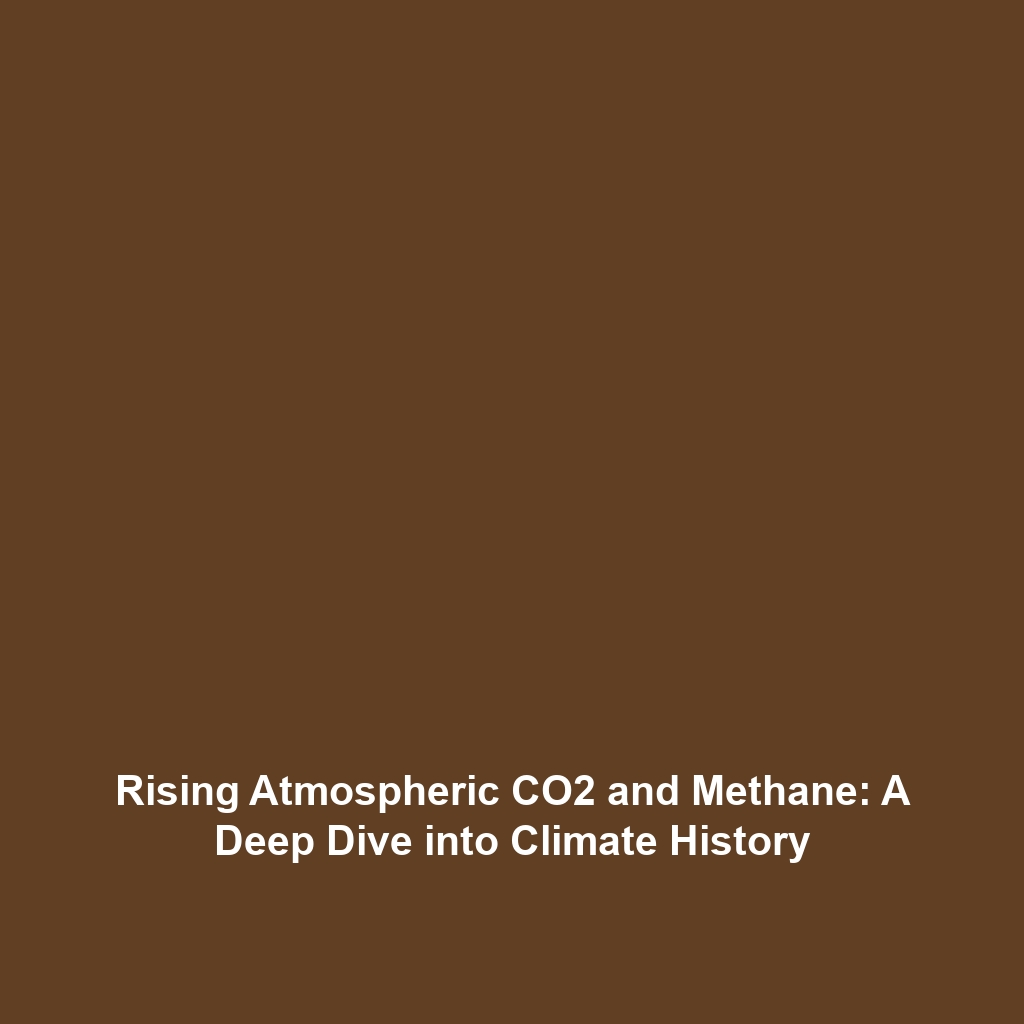Changes in Atmospheric CO2 and Methane Levels
Introduction
Changes in atmospheric CO2 and methane levels have profound implications for our understanding of climate history. These greenhouse gases play a pivotal role in regulating Earth’s temperature and influencing various climatic events throughout history. Increased atmospheric concentrations of CO2 and methane are closely associated with industrialization and human activities, which have accelerated climate change in recent decades. Understanding these changes is vital for developing effective strategies to mitigate climate change impacts, making the study of atmospheric CO2 and methane levels crucial within the broader context of Climate History.
Key Concepts
Understanding Atmospheric CO2
Carbon dioxide (CO2) is a greenhouse gas that traps heat in the atmosphere. Over geological time, variations in CO2 levels have led to significant climate shifts.
Key points about CO2 include:
- The natural carbon cycle and its impact on CO2 levels.
- Human activities that have led to increased emissions since the Industrial Revolution.
Significance of Methane
Methane (CH4) is another potent greenhouse gas, significantly more effective than CO2 at trapping heat, albeit present in lower concentrations. Its production and release are largely driven by:
- Agricultural practices, especially rice cultivation and livestock management.
- Waste management and landfills.
Understanding methane’s role is crucial for insights into past and future climate scenarios.
Applications and Real-World Uses
The study of atmospheric CO2 and methane levels has several significant applications in climate science and historical analysis. How changes in atmospheric CO2 and methane levels are used in Climate History includes:
- Reconstructing past climate conditions through ice core data and sediment analysis.
- Predictive modeling for future climate scenarios, helping policymakers develop informed climate action plans.
Current Challenges
Challenges of Studying CO2 and Methane Levels
Despite the advances in understanding atmospheric gases, several challenges remain:
- Inaccuracies in historical data due to sampling methods.
- Complex interactions between greenhouse gases and climate systems complicating predictions.
- Lack of comprehensive global monitoring systems to track emissions accurately.
Future Research and Innovations
Research on changes in atmospheric CO2 and methane levels continues to evolve, focusing on innovative solutions to combat climate change. Upcoming innovations include:
- Advanced satellite monitoring technologies for real-time greenhouse gas emissions detection.
- Development of carbon capture and storage (CCS) methods to reduce atmospheric CO2 levels.
- Research into methane production-reducing technologies in agriculture.
Conclusion
In summary, changes in atmospheric CO2 and methane levels are critical aspects of climate history that provide insights into both past climatic conditions and future challenges. As the science evolves, it becomes increasingly essential to monitor these gases and implement effective policies. For more information on related topics, check out our articles on carbon emissions and climate change impacts.

Leave a Reply